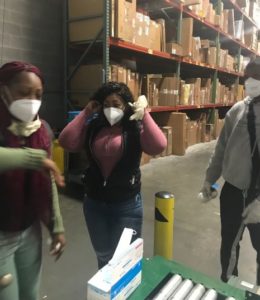Business Not As Usual
What’s Next for Repair Service Following COVID-19
After enduring weeks of “stay-at-home” orders to contain the COVID-19 pandemic, most states are reopening businesses previously deemed non-essential. However, with the virus still circulating and causing severe illness and death, business is anything but usual.
Personal protection items like masks and gloves have become standard issue for restaurants, hair salons and other industries where personal contact with customers is the norm. The same goes for service providers who must enter homes to make repairs and interact with customers.
 As we continue emerging from this unprecedented event, the long-term impact on the service repair industry is still yet to be realized. Some repair businesses have been forced to shut down permanently. With time on their hands and access to a wealth of “how to” videos online, there has been a sharp increase in consumer DIY repairs.
As we continue emerging from this unprecedented event, the long-term impact on the service repair industry is still yet to be realized. Some repair businesses have been forced to shut down permanently. With time on their hands and access to a wealth of “how to” videos online, there has been a sharp increase in consumer DIY repairs.
Adding to the mix of factors driving DIY repairs is an unemployment rate rivaling percentages not seen since the Great Depression of the 1930s. Retail stores are slowly opening across the country, but some powerhouse brands such as J.C. Penney, Neiman Marcus and J. Crew have filed for bankruptcy in the midst of the crisis. Industry projections for major appliance and electronics production and sales have dropped for at least the remainder of 2020.
Still, despite this challenging market environment, there is considerable opportunity for service businesses. Numerous complex repairs are way beyond the basic capabilities of a general DIY consumer. Anything to do with electrical wiring and circuitry, for example, is best left to the professionals.
In a down economy, demand for repair typically surges as consumers put off replacing big ticket household items. Plus, as restaurants closed and now operate in some states with capacity restrictions, consumers have been using their major kitchen appliances more than ever, raising the risk of breakdowns. Consumer need for professional repair service could ultimately outpace the availability of service providers – and perhaps enable higher rate charges. However, with decreased model production comes decreased parts production so it may become harder to find some necessary repair components.
Some repair providers have rapidly adjusted to the new normal and are getting creative with such service offerings as virtual estimates and troubleshooting that limit customer contact. Contactless measures are likely to continue – and expand – even after the current pandemic abates.
If nothing else, COVID-19 has been a dramatic wakeup call to the world and the repair industry. And if the experts are correct, this is not the last time the world will face a similarly impactful pandemic. Businesses must evaluate their existing response strategy and develop best practices for managing through the next crisis. Those able to adapt under the most challenging conditions will survive, and even thrive, while others risk becoming just another impact statistic.

 Internal Response
Internal Response